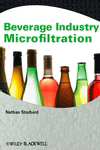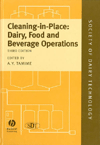Beverage companies always are looking for ways to save money without cutting corners, so sustainable technology is top of mind now because of the potential savings that it presents, says Rick Pallante, market development manager for packaging at Nordson Corp., Westlake, Ohio.
“Change is difficult unless there’s a reason to do it,” Pallante says. “Nobody will take change unless there’s value associated with it.”
For labeling equipment manufacturers, that means dealing with evolving packaging materials, including thinner bottles and brittle packaging, producing equipment that can keep up with the high speeds of a production line, and incorporating materials that cost less and do not interfere with recycling.
Nordson produces non-contact and closed extrusion systems for labeling, and Pallante says that the manufacturer has developed systems that can reduce the amount of adhesive a beverage company uses by about 70 percent.
The direct cost savings is significant, as adhesives have nearly doubled in cost in recent years, but reducing the amount of adhesive used in packaging has multiple green benefits as well, Pallante says. Adhesives are made from oil-based resins, so a beverage company can save a barrel of oil for every 315 pounds of adhesive reduced, he says.
Excessive adhesive also creates a problem when it comes time to melt recycled PET bottles, Pallante says. If all of the adhesive cannot be removed from a bottle, it will burn up in the process, and the new bottle formed from the recycled material will appear “smoky,” he says.
“Anything we can do to remove the amount of adhesive, lower that amount, and it can be put underneath the sustainability umbrella, I think is a good thing,” he says.
For Raleigh, N.C.-based Axon Corp., a manufacturer of shrink sleeve and stretch sleeve application machinery, the sustainability movement has meant adapting its machines to cut harder, more brittle material, says Ed Farley, the company’s sales director.
When beverage containers began to shift from being manufactured with PVC material to PETG material, Axon had to change its cutting blade materials because PETG is more difficult to cut, Farley says. Although PETG has provided some challenges for labeling machine manufacturers, it also has had a positive effect on the aesthetic appeal of the final package, he says.
“It’s a more consistent material with little or no machine direction shrink,” Farley says. “It allows you to provide a better looking product on odd-shaped containers.”
In the last two years, the standard film thickness also has shrunk as beverage companies look to save money, he adds. Two years ago, the standard film was 50 microns thick, but today it is about 40 to 45 microns, Farley says.
Need for speed
As beverage companies demand for more efficient and sustainable labeling equipment intensifies, labeling equipment manufacturers say companies are looking to a total cost of ownership for a machine instead of the price tag.
“When a purchasing person sees the cost of the system, they see an invoice,” Nordson’s Pallante says. “One of things I think is a disconnect between purchasing and the floor nowadays is that they don’t see what the soft costs are. They’ll see the invoice for the price of the machinery, but they don’t necessarily see on the maintenance budget where the adhesive costs have gone down.”
As a result, labeling equipment manufacturers are producing machines with greater longevity and energy efficiency while beefing up service and support for the machines, Axon’s Farley says.
One way to better the total cost of ownership of a labeling machine is to increase its speed to keep up with the high-speed production lines of the beverage industry.
“In the beverage industry, they’re operating at higher speeds than other industries that we work in, and downtime is a tremendous waste of money,” Farley says.
To better integrate with the high speeds of the beverage industry, SleeveCo, Dawsonville, Ga., introduced a faster stretch sleeve application. The company’s SL5400 line can run 70 to 90 bottles a minute with one head, says Jyl Gryder, SleeveCo’s marketing manager.
To achieve the speeds demanded by the beverage industry, Axon manufacturers in-line labeling machines that can process up to 800 bottles per minute, Farley says. For the beverage industry, the SL line of sleeve labeling machines is Axon’s most popular, he says.
The Axon EZ-Seal 200SL heat shrinkable sleeve labeling system is an entry level machine that can process both sleeve labeling and tamper evident banding at a rate of 250 bottles per minute, Farley says. The 400SL version of the machine can process more than 400 bottles per minute, and the 2-400SL includes two application heads to double its output, he says.
The SL line features options for steam, infrared and convection shrink systems, has a NEMA 4X electrical enclosure and dual reel film unwind stand, and can include a conveyor, the company says.
Axon’s ThermoPoint steam tunnel comes in two versions: one with three separate zones and another with six separate zones that can be individually set to different steam rates, elevations and angles, the company says.
Karlville Development, Miami, produces shrink sleeve application and shrink sleeve converting equipment. The company introduced its SleevePro600, which can process 600 bottles per minute, the company says.
Using Bullet Technology and an optimized tension system, the fully-automatic SleevePro600 can increase registration accuracy, the company says. The machine features a six-blade rotary cut, remote maintenance and advanced motion control.
For continuous production of shrink sleeve labeling and tamper evident banding, Norwalk, Conn.-based PDC International Corp. introduced its 60 Series Evolution Shrinksealer, which uses two servos for product handling and sleeve registration. The machine can operate at 50 to 170 containers per minute depending on the package size, the company says.
In shrink sleeve labeling applications, the 60 Series applies full-height body sleeve labels with primary graphics and can be designed to extend over the cap with a horizontal perforation, PDC says.
To eliminate bottle necks in the labeling line, Nordson offers roll-fed and wraparound labeling systems to replace open wheel-pot systems.
For roll-fed applications, Nordson offers a closed labeling system that uses the company’s hot-melt applicator to deliver adhesive to its PatternJet RF gun, which applies spiral-shaped swirls or mini-beads of adhesive to the label after it is placed on the vacuum drum. Nordson also offers a non-contact labeling system that is ideal for transparent labels in roll-fed applications. Using e.dot+ guns and piston pump technology, the system delivers the same amount of adhesive on each product at any speed, the company says.
In carousel systems, Nordson’s PatternJet guns apply spiral-shaped swirls or mini-swirls of adhesive directly to the body of the bottle or can before the label is applied, the company says. Once the container receives the label, the system applies mini-swirls, beads or a strip of adhesive to the cross seam to seal the label end.
Nordson says its carousel system adhesive applicator is ideal for carbonated beverages and can achieve adhesive savings of up to 80 percent.
The closed system keeps contaminants out, allowing the Nordson machines to run longer than wheel pot systems, Pallante says.
“Our primary focus has been on adhesive reduction and increase in uptime,” he says. “Most everybody we’ve talked to, their big push right now has been to get the machines to run longer.”
Domino Amjet, Gurnee, Ill., which primarily works in coding, offers the M-Series of print-and-apply labelers. The series is used to label cases and pallets once beverages have gone through the entire production line.
The M-Series’ networking capabilities and its modular design, which allows the machine to fit into tight spaces, set Domino Amjet’s solution apart from others in the industry, says Bill Bonaccorsi, Domino’s director of marketing and product management.
With the M-Series of print-and-apply labelers, beverage companies can choose from a range of printers that include direct thermal transfer, thermal transfer, RFID capable systems and an OEM print engine, the company says. A range of blow, tamp, tamp and blow, and wipe applicators combine with the printers.
Domino’s print-and-apply labelers network with Windows software for label creation and design and can download to printers via serial, USB or Ethernet connections, the company says. BI




